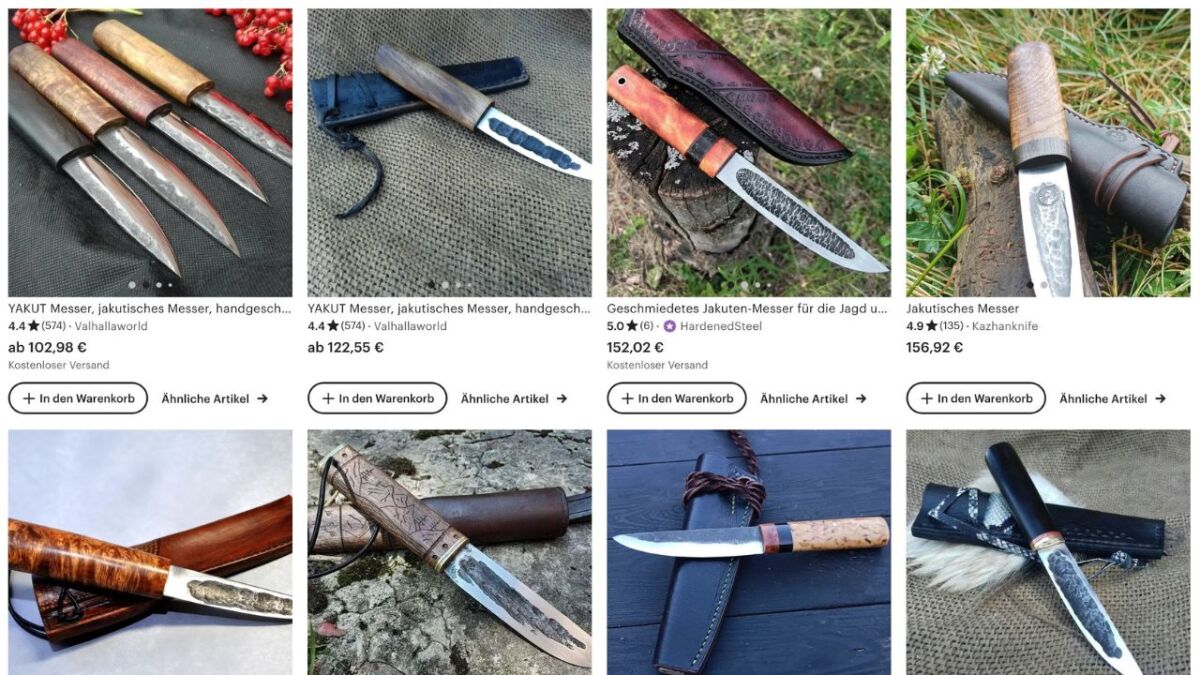What is a Yakut knife - Traditional Siberian and hand-forged outdoor knives
Learn more about the traditional Yakut knife of the Siberian Yakut's, a hand-forged outdoor knife with a unique design and functionality.
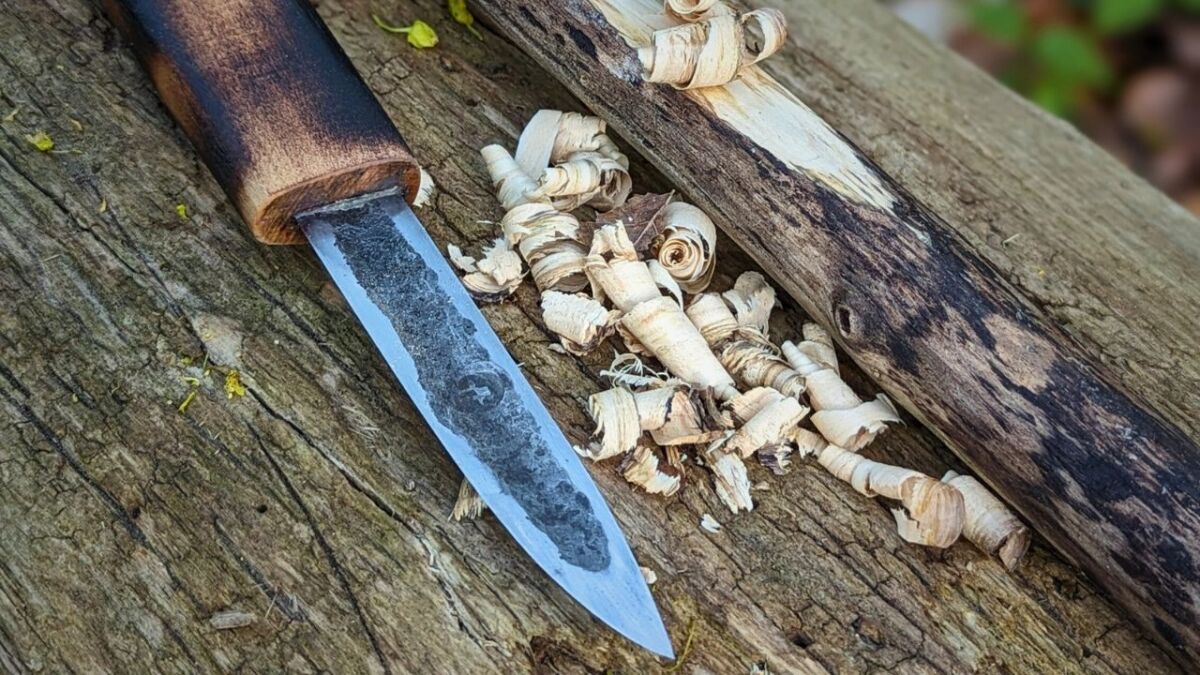

From Martin Gebhardt. Check out my “About me” page.
👉 The key facts from this guide
- Yakut knives are traditional, multifunctional tools of the Siberian Yakut's, hand-forged from high-quality carbon steel.
- They are known for their unilateral hollow grind on the blade, which saves material and weight while providing stability.
- The knives are durable and reliable for various activities such as hunting, fishing, cooking, and woodworking.
- Traditional Yakut knives have a chisel grind, which allows for easy and effective sharpening.
- The oval full handle ensures ergonomic handling and slip resistance during use.
- Caring for and maintaining the knife is crucial for its longevity, including regular sharpening and protection from moisture.
Many people think that traditional craftsmanship belongs to the past. However, the Yakut knife proves the opposite. These Siberian knives have secured their place in modern everyday life.
They are more than just tools; they are a testament to the art of survival and the wisdom of the Yakut people.
With their unique construction and hand-forged steel, they offer an unparalleled quality that modern mass-produced products often lack.
As a wilderness mentor with years of experience in survival training and outdoor gear, I know what good tools are all about.
I have held many knives in my hand, but the Yakut knives are at the top of my list for simplicity, reliability, and versatility.
Let's explore together why these traditional knives are a must-have for every outdoor enthusiast. You will be surprised.
What is a Yakut knife?
A Yakut knife is a traditional knife that originally comes from the Yakut's, an indigenous ethnic group in Siberia. It is a simple and useful tool that served the everyday needs of the Yakut's.
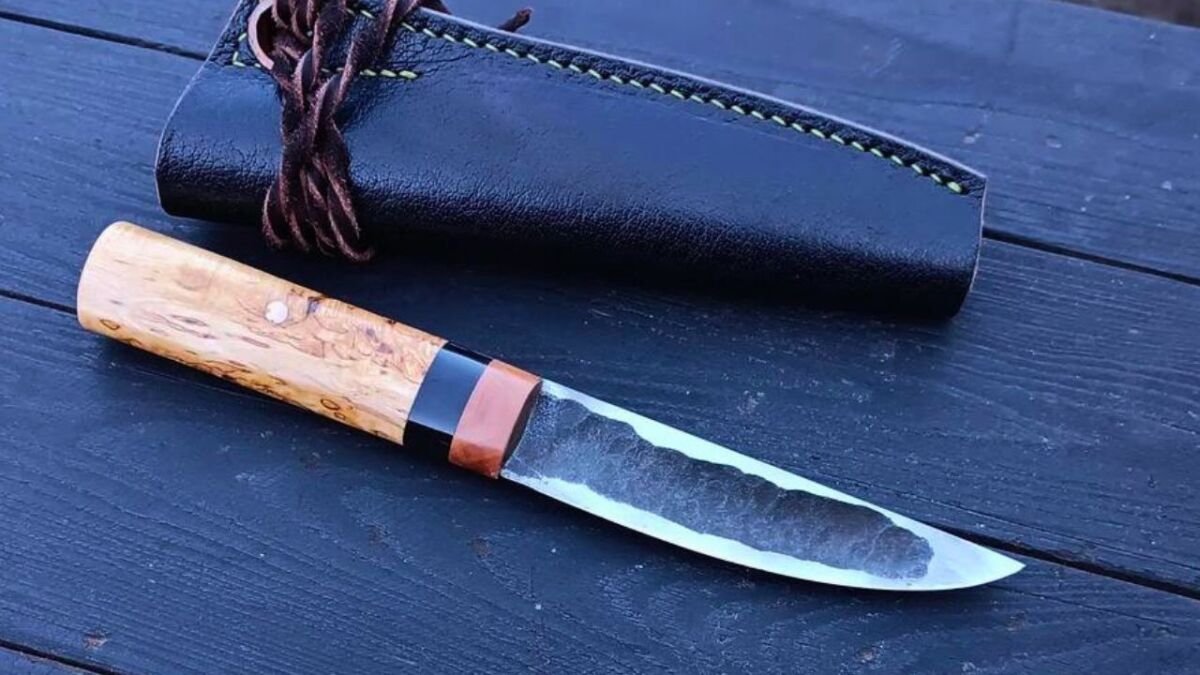
The main feature is a single-sided hollow on one side of the blade. This hollow was probably created in the past to save material, make the knife lighter, and cut frozen items more easily.
Today, this groove continues to be forged and is a distinguishing feature of a Yakut knife.
The Yakut knife is also characterized by its distinctive handle shape and the materials used such as carbon steel and high-quality wood.
| Usage | Used for working with wood, hides, skins, fish, meat, or for combat. |
| Origin | It has been used in Yakutia for hundreds of years without significant changes in design. |
| Blade Length and Width | The blade length and width vary depending on the specific knife type and model. Approximately 8 to 18 cm long and 2.5 - 3.8 cm high. |
Although the Yakut's (more information here) were originally located in Siberia, similar knives are also produced and used in other regions. Nowadays, Yakut knives are often valued as traditional hunting and outdoor knives.
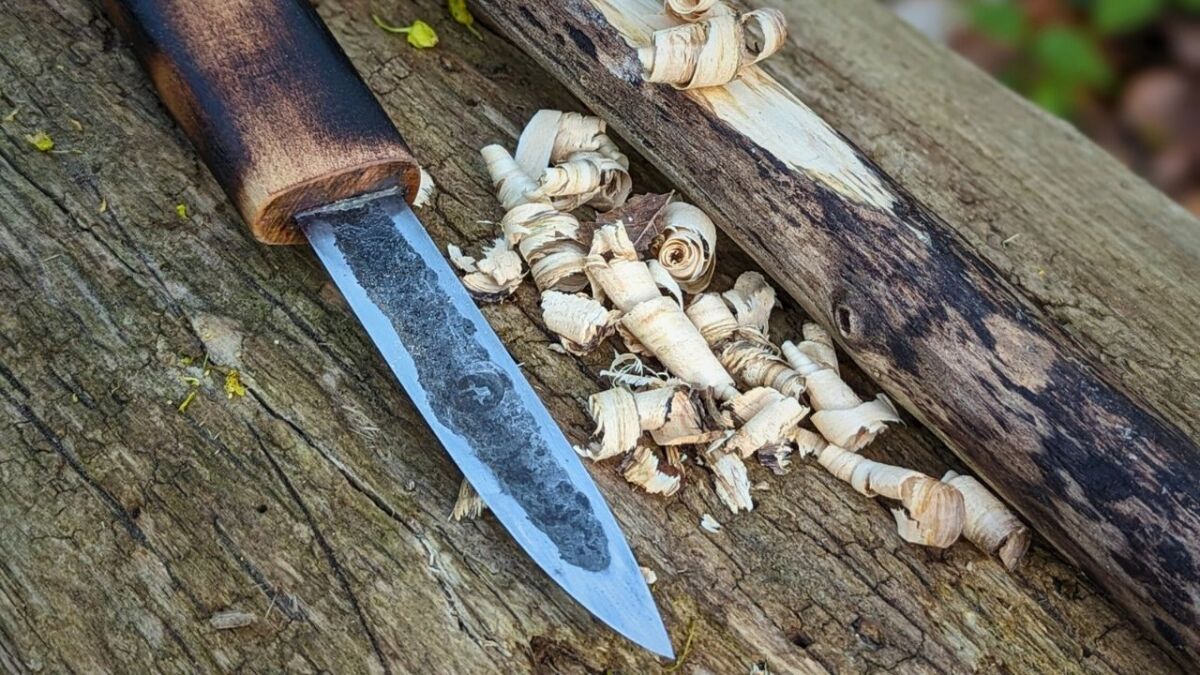
Many residents in Siberia still use this knife today. They appreciate it for its versatile usability.
The blade shape allows for precise work, from hunting to cooking to woodworking. Yakut knives are durable and reliable, even under tough conditions.
Note on the guide: I have extensively researched a lot of information on this. I have spoken with knife sellers and Russian compatriots, and searched through many sources. Unfortunately, I have not yet found any official detailed sources from the Yakut ethnic group.
Why was a fillet integrated?
A Yakut knife is a traditional knife of the Siberian Yakut's, serving as a versatile tool that still meets the everyday needs of Yakut nomads and hunters.
It is known for its deepening in the blade, a single bevel hollow grind along the straight back, and for its tip as well as cutting edge.
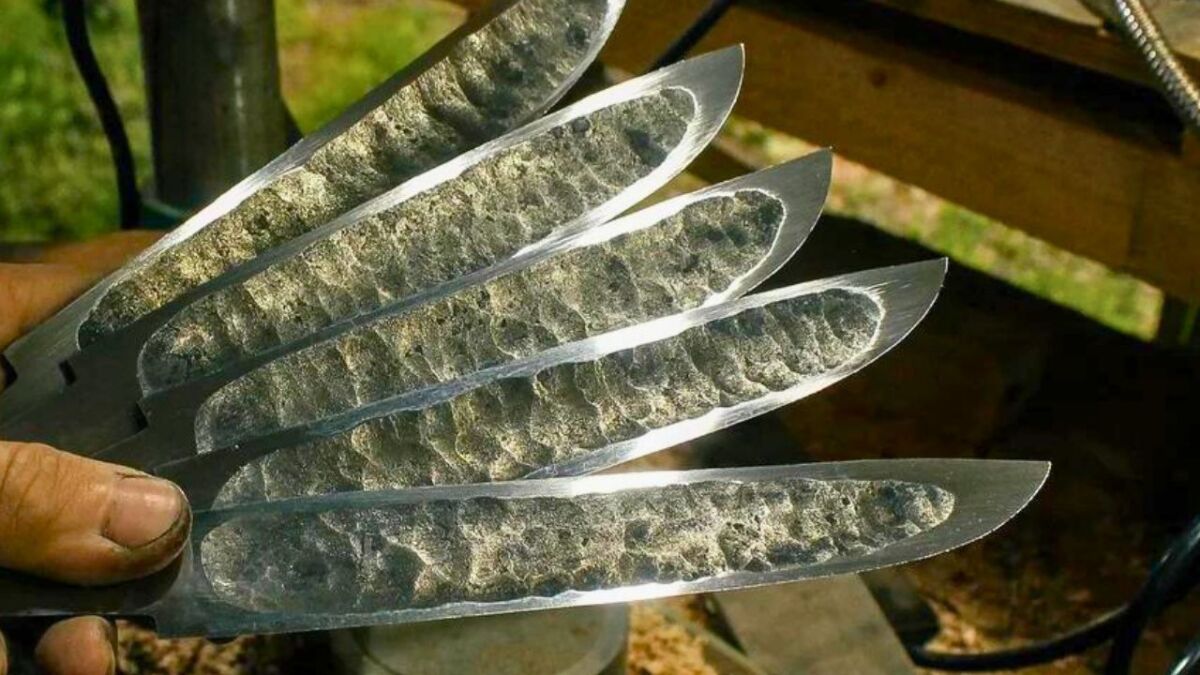
The construction of the blade and its profile provide sufficient strength, even when using a thinner steel in manufacturing, meaning that 1⁄3 less material is required for the same size compared to a traditional blade.
Here are the reasons why a hollow grind was likely integrated into a Yakut knife:
-
Material savings: By creating the hollow grind, less material is needed for the blade. This saves resources and makes production more efficient.
-
Weight reduction: The hollow grind makes the knife lighter. This is especially important for a tool that is often carried for long periods.
-
Stability: Despite the thinner and lighter construction, the blade remains stable and robust. It can withstand everyday stresses.
- Cutting performance on frozen food: It is said that frozen foods, such as fish or reindeer meat, can be cut more effectively with a Yakut blade. This is due to the reduced contact area provided by the hollow grind.
-
Traditional feature: The hollow grind is a characteristic feature of Yakut knives, showcasing the craftsmanship of their production.
-
Functional aesthetics: It gives the knife a unique appearance and makes it a recognizable symbol of the traditional techniques of the Yakut people.
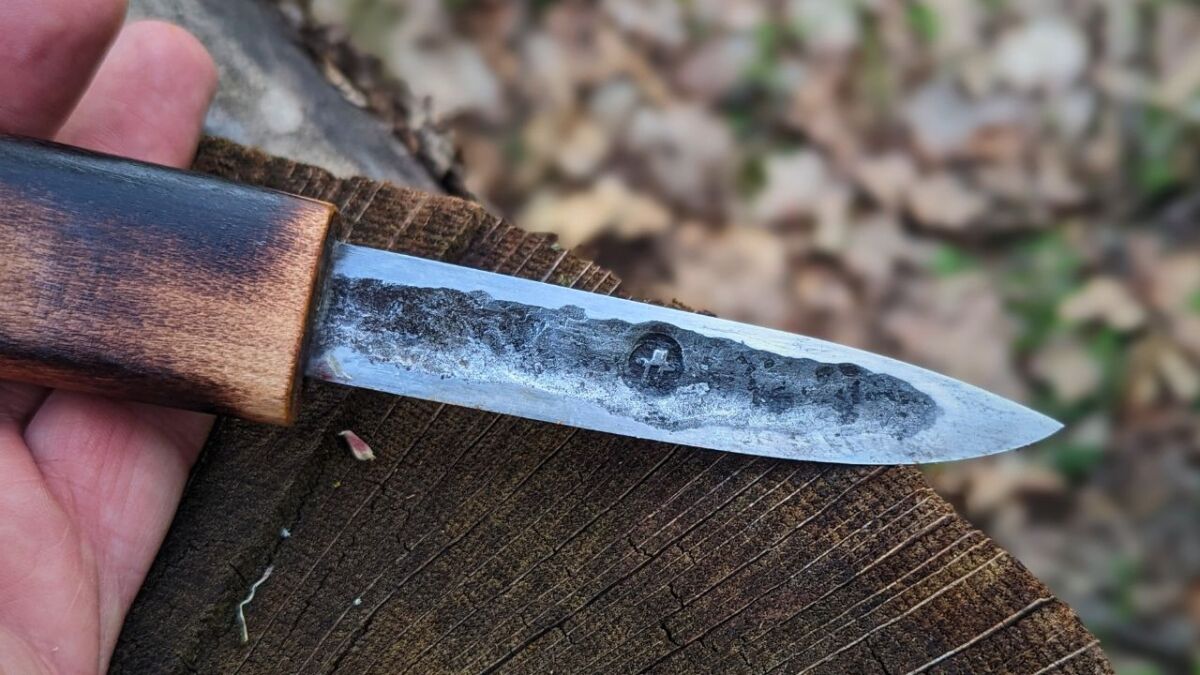
How is a Yakut knife made?
The manufacturing process is carried out in traditional craftsmanship, often by specialized knife forges.
The blades are forged and processed by hand to achieve the desired shape and sharpness. This artisanal approach is typical for the production of Yakut knives.
Nowadays, similar knives are also produced in other regions, but they are based on traditional Yakut designs.
The fact is: The use of carbon steel and other materials, as well as the hollow grind, allow the construction of thinner blades with the same strength as traditional knives.
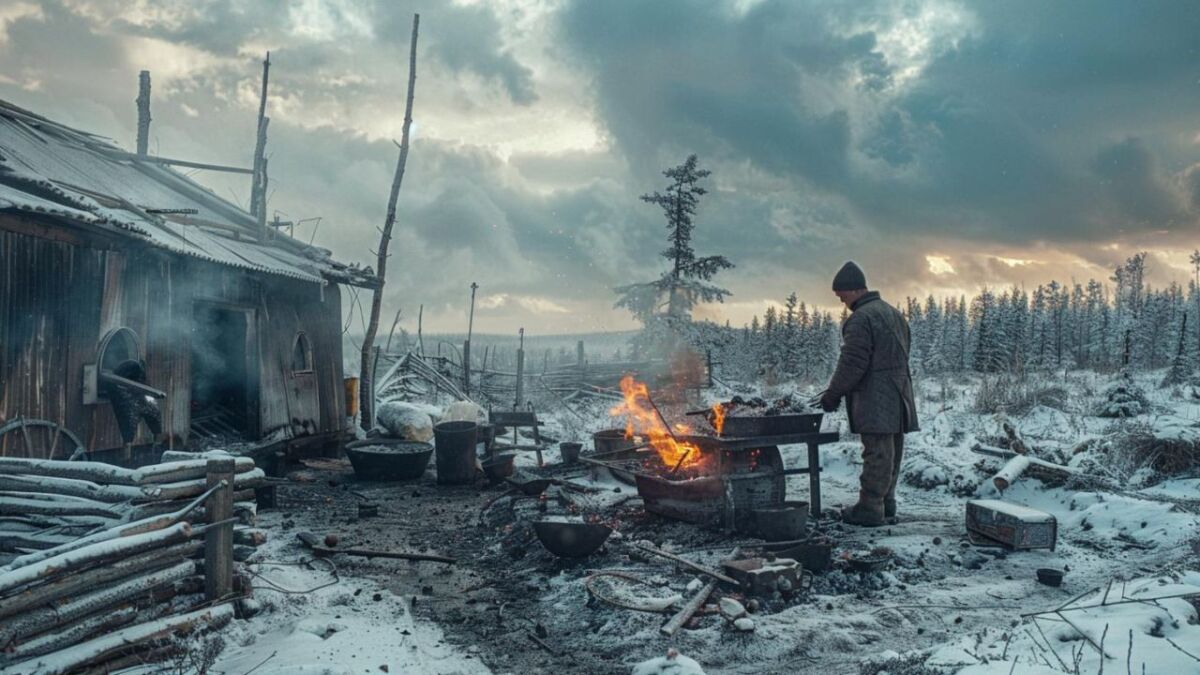
Hand-forged: how are Nordic Yakut knife blades made?
I love holding a handmade knife in my hand. Especially the Yakut knife blades have caught my eye. They are not only a piece of tradition from Siberia, but also incredibly useful in everyday life.
Traditionally, Yakut knife blades are hand-forged in a meticulous process. Ancient techniques are used, passed down from generation to generation.
Here is an overview of the most important steps in the production of a Nordic Yakut knife blade:
-
Material selection: High-quality carbon steel is used as the base material. Nowadays, sometimes even old files from the Soviet era are used, as they provide a particularly pure and hard steel.
-
Annealing: Initially, the steel is annealed, meaning it is heated and slowly cooled. This makes it softer and easier to work with.
-
Shaping: Now the actual forging process begins. The steel is heated in the forge until it glows red, and then forged into the characteristic shape of the Yakut blade on the anvil. This also includes creating the typical single-sided hollow grind.
-
Hardening: After shaping, the blade is hardened. It is heated again and then quenched in oil or water. This gives the steel its final hardness.
-
Tempering: To prevent the blade from becoming too brittle, tempering follows. The blade is heated again, this time only to about 200 °C, and then slowly cooled. This reduces the hardness slightly and increases toughness.
-
Grinding: The blade is then ground in several passes to achieve the final shape and edge. Traditionally, a single-sided bevel grind is used.
-
Polishing: Finally, the blade is polished to achieve a smooth, shiny surface. Various abrasives and polishing pastes are used for this process.
The result is a unique, hand-forged Yakut knife blade with outstanding cutting and durability properties. Each blade is an individual masterpiece, shaped by the experience and skill of the blacksmith.
This traditional manufacturing process is very time-consuming and requires great craftsmanship. But it is precisely this attention to detail and the connection to old traditions that give the special charm and quality to hand-forged Yakut knife blades.
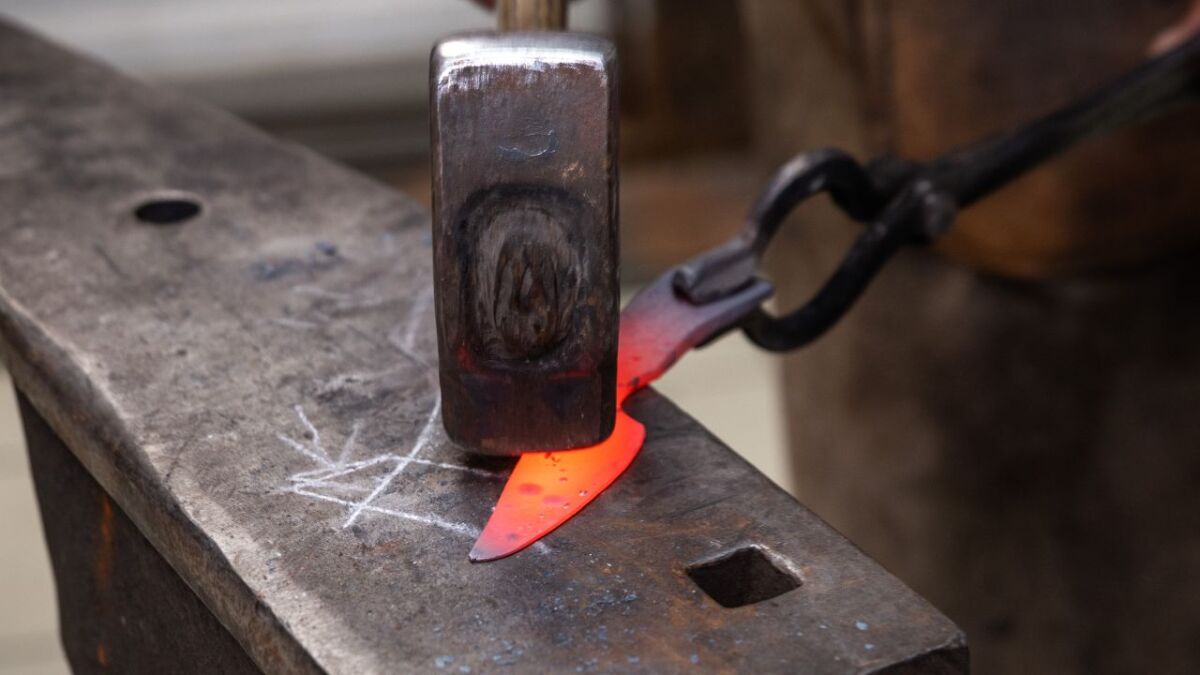
What makes a Yakut knife so special, and how does it differ from other types of knives?
Yakut knives hold a special place in the world of knives. They differ in many ways from other types of knives that are also designed for use in nature.
Survival Knives
Compared to survival knives, Yakut knives are often less bulky and heavy. Survival knives are usually very sturdy and thick-walled, as they are designed for extreme situations such as chopping wood, prying, or splitting bones.
Yakut knives, on the other hand, are slimmer and more elegant, without sacrificing strength. They are excellent for fine work and precise cuts.
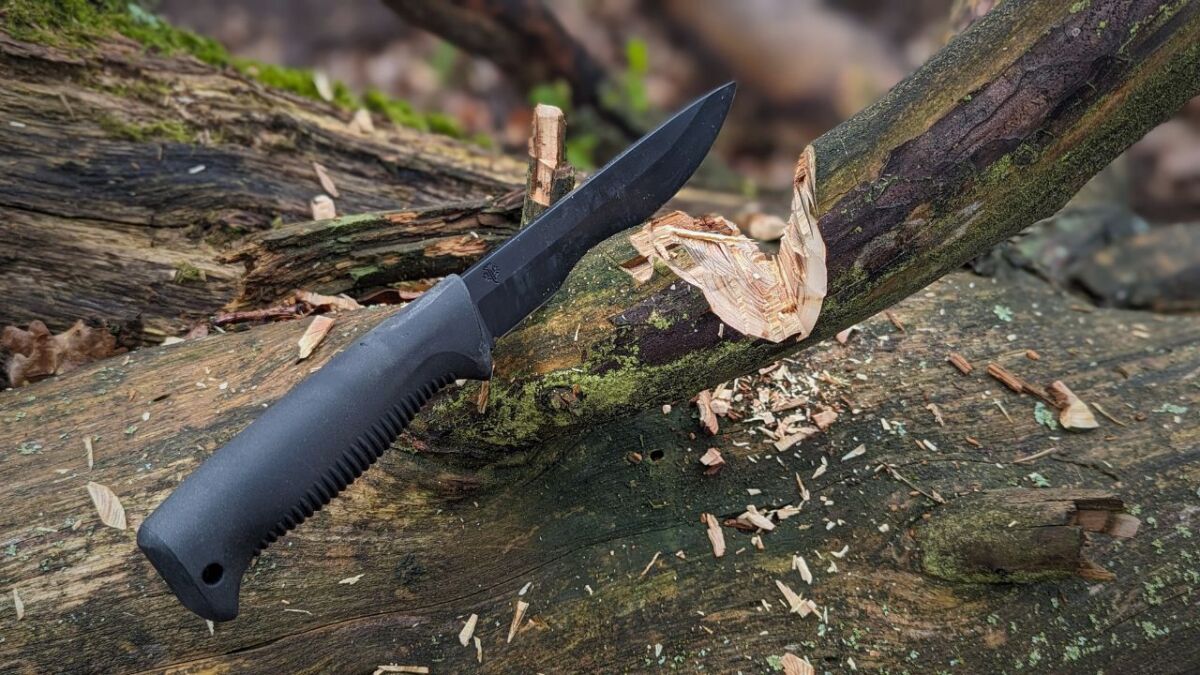
Bushcraft Knife
👉 Bushcraft knives resemble Yakut knives in their design, as they are also versatile outdoor knives. However, bushcraft knives typically have a Scandi grind, which is particularly well-suited for woodworking.
The blades are often thicker than those of Yakut knives, giving them additional stability. Yakut knives, on the other hand, score with their special blade shape and the characteristic chisel grind, making them versatile for various cutting tasks.
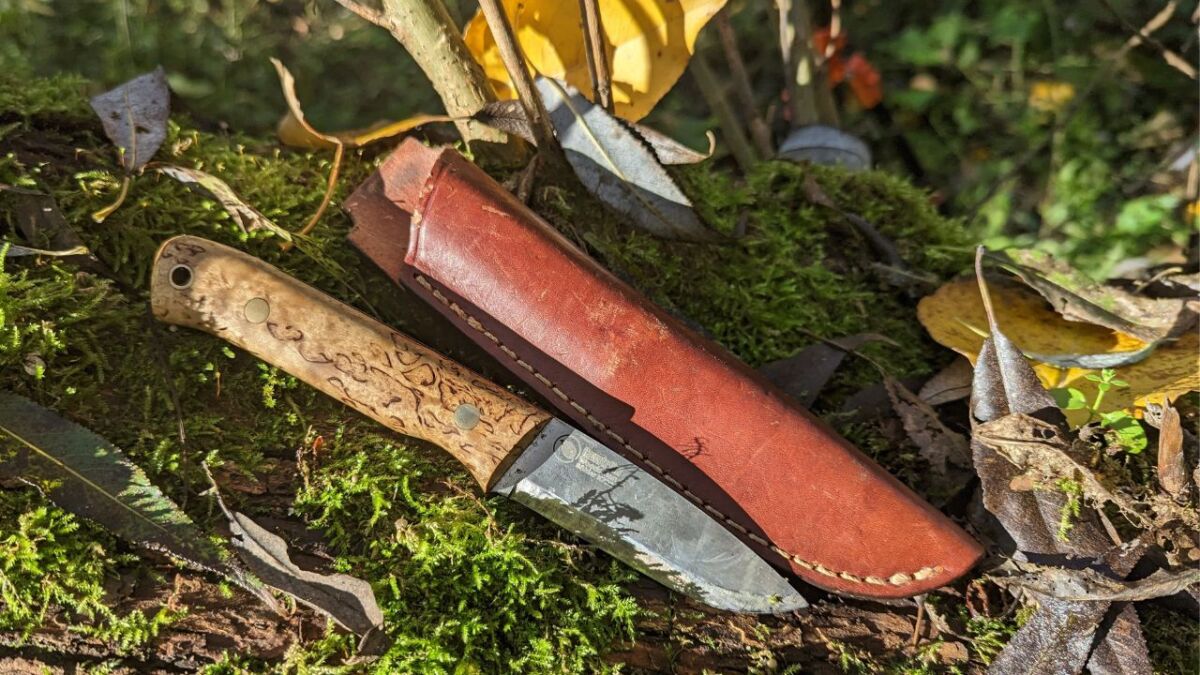
Puukko Knife
👉 Puukko knives are Finnish traditional knives, primarily designed for working with wood. They typically feature a Scandi grind, which allows for clean, controlled cuts and is easy to sharpen.
Puukkos mostly have a straight back and a relatively short, slightly bellied blade. In contrast, Yakut knives are more versatile and are suitable not only for woodworking but also for tasks such as gutting game or filleting fish.
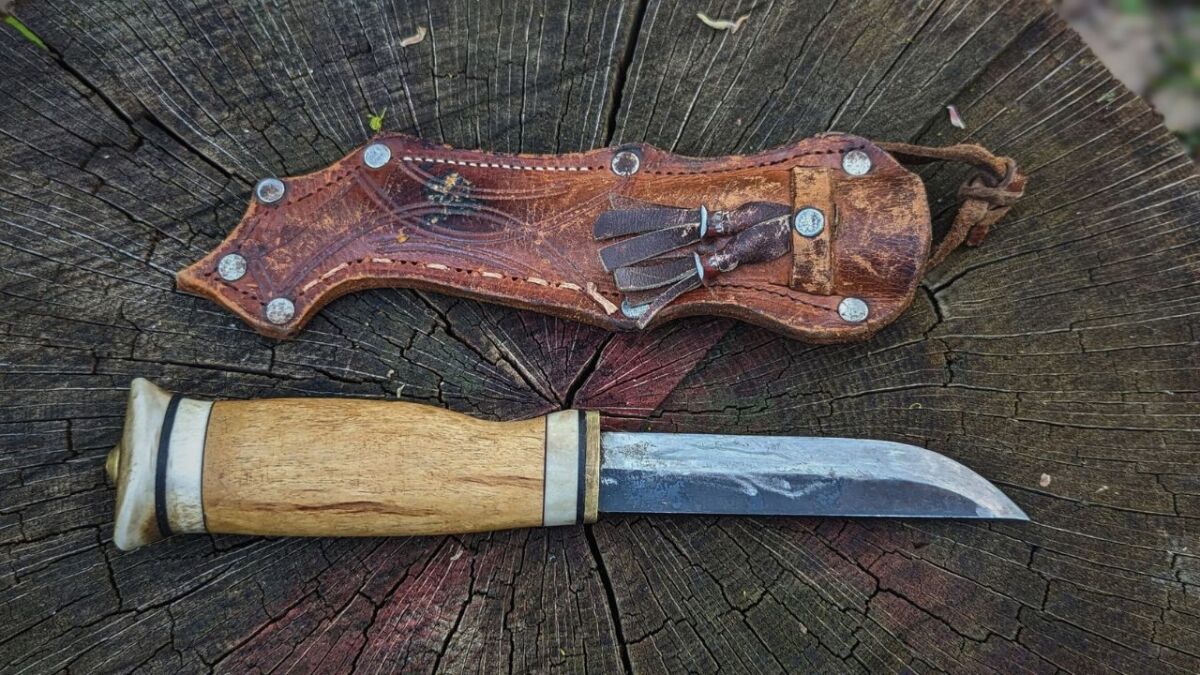
👉 Another unique feature of Yakut knives is their cultural heritage. They are deeply rooted in the tradition of the Siberian peoples, embodying their way of life and craftsmanship.
Each Yakut knife carries a piece of this history within it and is not only a tool, but also a cultural object.
Yakut knives represent a unique combination of robust construction, versatile usability, and cultural significance.
They are not as specialized as other types of knives, but they convince as reliable companions in all situations. Their special blade shape and chisel grind make them a distinctive tool that is unmatched.
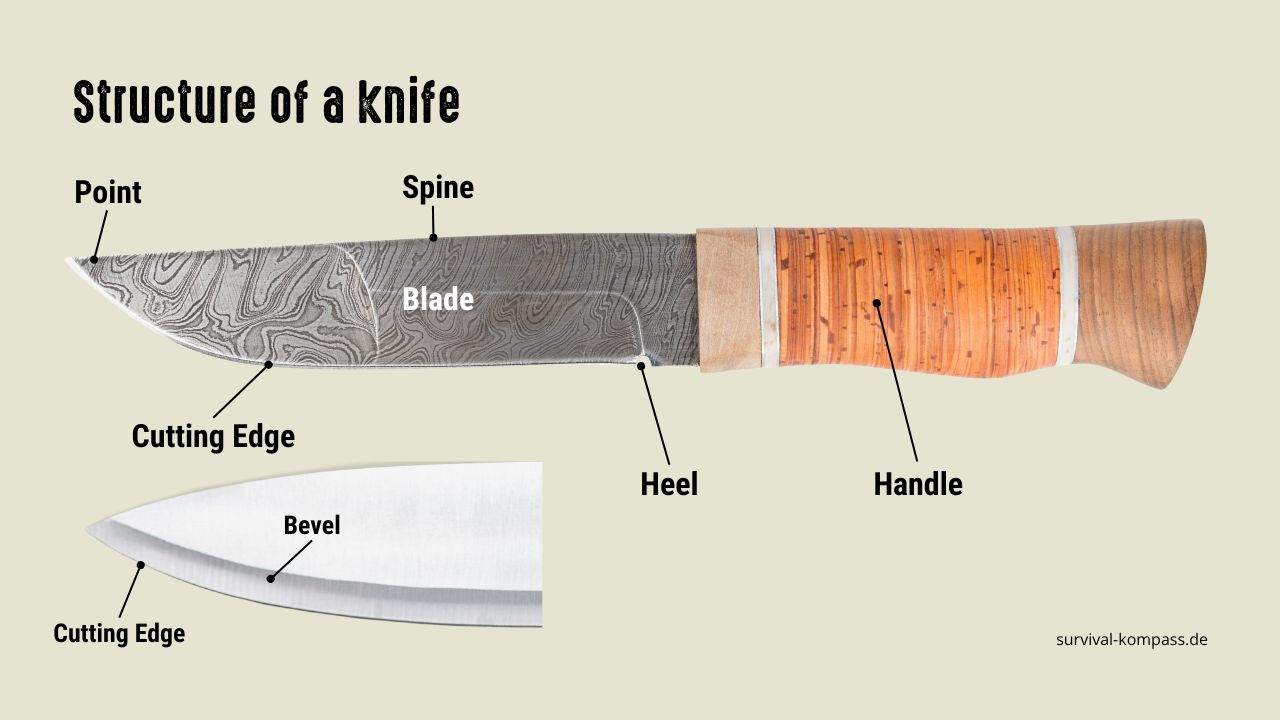
What type of blade edge does a traditional Yakut knife have?
Yakut knives often have the unusual "chisel" blade grind, which is easy to sharpen and re-sharpen. This grind is also known as "Chisel Grind."
I had to get used to the cut first, for the following reasons:
- I need to angle the knife more steeply when carving.
- When cutting vegetables or other things, the blade tends to drift to the right.
These are not disadvantages for me, but simply a matter of getting used to. I just press more to the left when cutting vegetables.
Please note: The blade is sharpened on the right side for right-handers and on the left side for left-handers. So there are differences here that you should consider when getting yourself a Yakut knife.
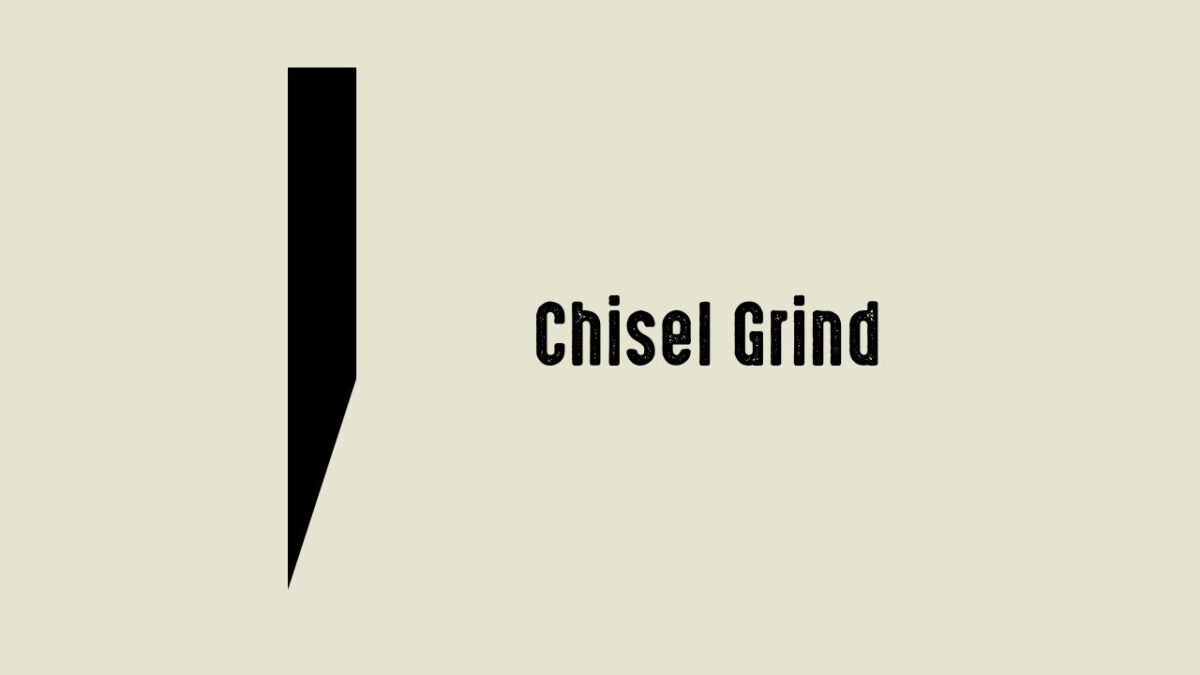
Here are the facts about the chisel cut:
- With a chisel grind, only one side of the blade is sharpened, while the other side remains flat.
- The chisel grind results in an asymmetrical blade shape, similar to a chisel or gouge.
The advantage of this grind is that it is easy to apply and easy to sharpen. Even with simple tools, the blade can be quickly brought back into shape and resharpened.
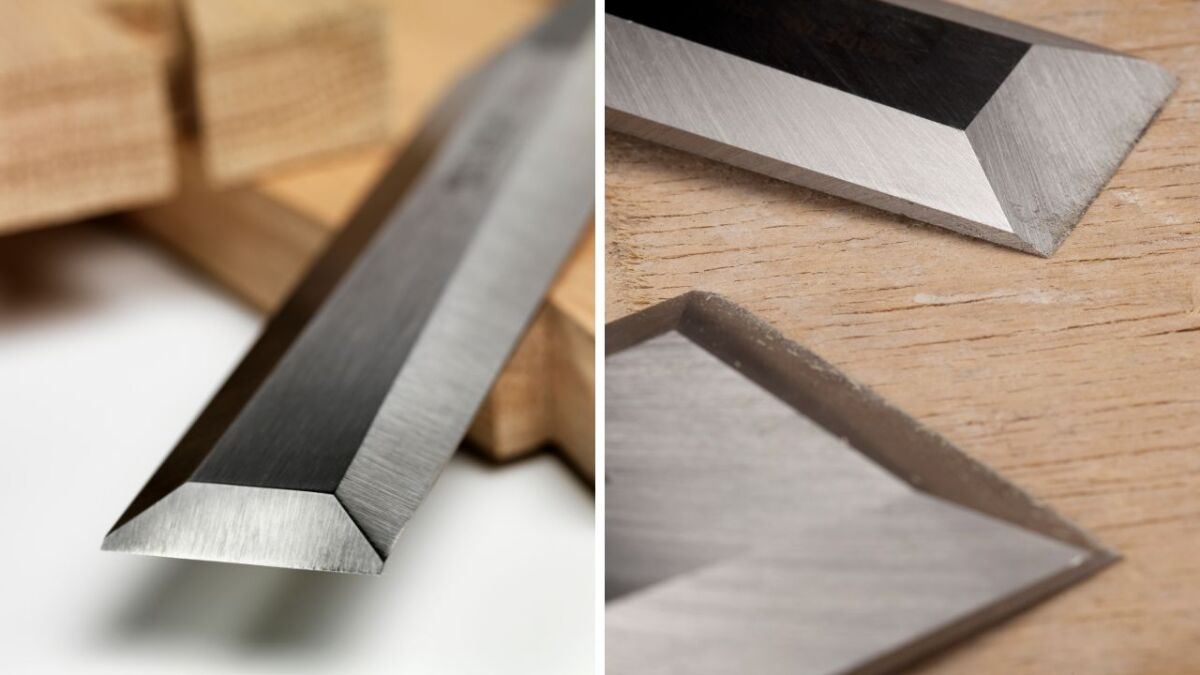
The chisel grind is particularly well suited for rough work such as splitting and carving wood or breaking down game.
The robust, single-sided sharpened edge easily penetrates the material and can also cut through harder surfaces.
However, the chisel grind also has disadvantages: It is less suitable for fine cuts, such as those required for filleting fish or cutting vegetables, for example.
Other types of grinds would be more suitable here, such as the double-sided flat grind (Scandi Grind) or the hollow grind, which allow for a thinner, sharper edge.
Yakut knives with chisel grind are primarily durable work knives designed for use in the wilderness. Nowadays, Yakut knives with Scandi or flat grind are also being produced.
Read also
What are the common blade grinds for outdoor knives? (How to choose the right knife) - Learn all about the most important blade grinds for outdoor knives. This way you can find the optimal grind for every activity such as carving or field dressing game.
Use of Carbon Steel and Other Materials
The main component of traditional Yakut knives is carbon steel, which provides an optimal balance between hardness and sharpness. This steel has excellent edge retention and is easy to sharpen.
Stainless steel was simply out of the question earlier because it was first developed in the 1910s.
Today, in addition to carbon steel, other materials such as Damascus steel are used for high-quality and decorative blades.
The use of carbon steel allows the production of robust and durable knives that can withstand the demands of daily use.
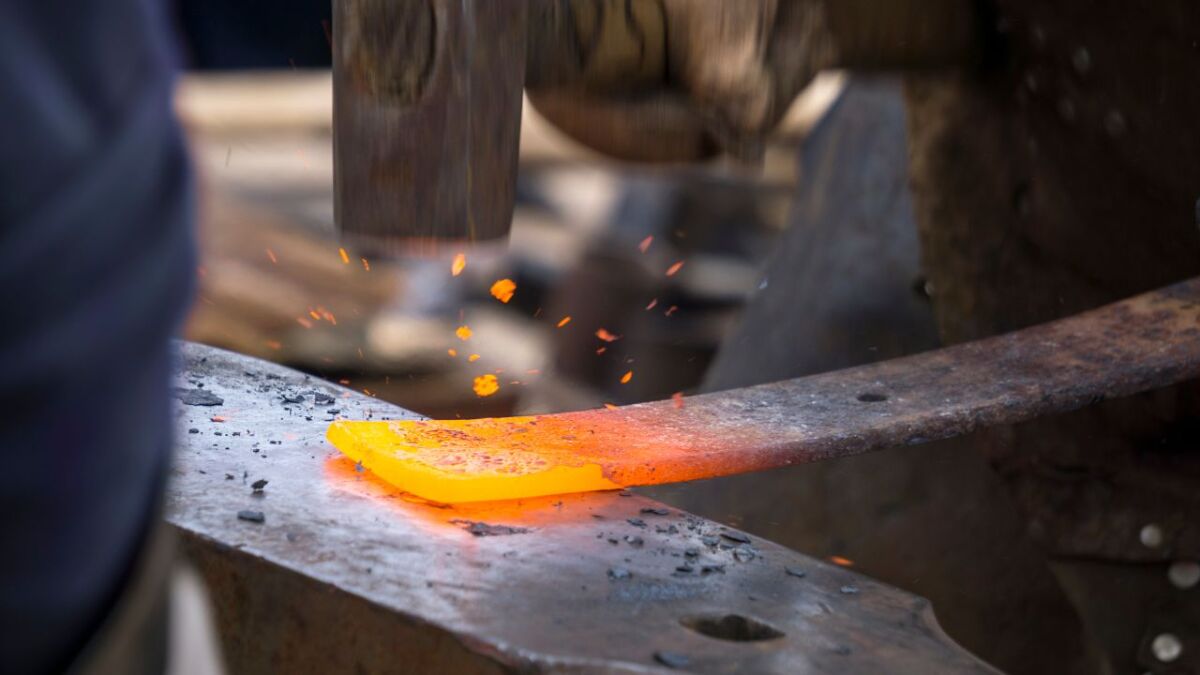
What is the difference between cold-forged and hot-forged blades?
Yakut knives are traditionally hot-forged. In this process, the steel is heated to temperatures of up to 1200 °C.
The high temperature makes the material particularly malleable, allowing the blacksmith to forge the characteristic shape of Yakut knives with the single-sided hollow grind. At the same time, hot forging ensures a high strength of the blade.
Cold forging is less commonly used in Yakut knives. In this method, high-quality steel is reshaped at room temperature under high pressure.
This allows for even more precise shapes and tighter tolerances than hot forging. However, cold forging is more complex and expensive.
For the user, it ultimately makes little difference whether the blade was forged warm or cold.
Both methods, when carried out correctly, produce high-quality and durable blades. The choice of method is up to the blacksmith and depends on their preferences, skills, and available equipment.
Forged blades have a bit more of the traditional craftsmanship, while cold-forged blades stand for perfection down to the smallest detail.
The typical oval full handle of Yakut knives
A characteristic feature of Yakut knives is not only the blade shape but also the typical handle. Most Yakut knives have an oval full handle.
This handle is characterized by its ergonomic shape reminiscent of a long egg. It fits particularly well and comfortably in the hand, allowing for a secure, fatigue-free guiding of the knife even during prolonged use.
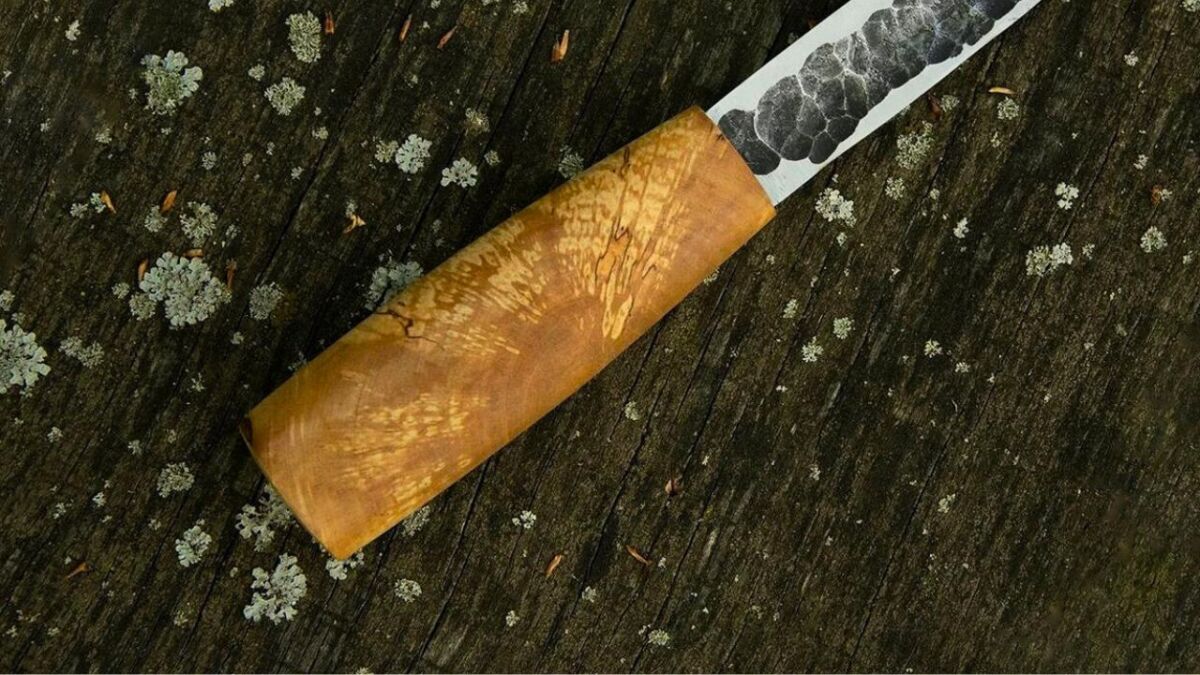
The egg-shaped design prevents the knife from rotating in the hand, providing a secure grip.
Traditionally, natural materials such as wood, bone, or reindeer horn are used for the handles of Yakut knives.
These materials are not only visually appealing, but also offer a pleasant tactile feel and good grip.
The egg-shaped, full handle is an essential component of the typical design of Yakut knives. It combines functionality with aesthetics and helps these knives not only fit perfectly in the hand, but also become an attractive companion in the wilderness.
What are Yakut knives used for?
Yakut knives are true multitaskers and are used for various tasks. In their homeland of Siberia, they are indispensable companions for hunters and nomads.
For hunting - Hunters appreciate the cutting ability
The sharp, sturdy blades are excellent for hunting and processing game. They make gutting and butchering prey easier and handle tougher cutting tasks like slicing through tendons with ease.
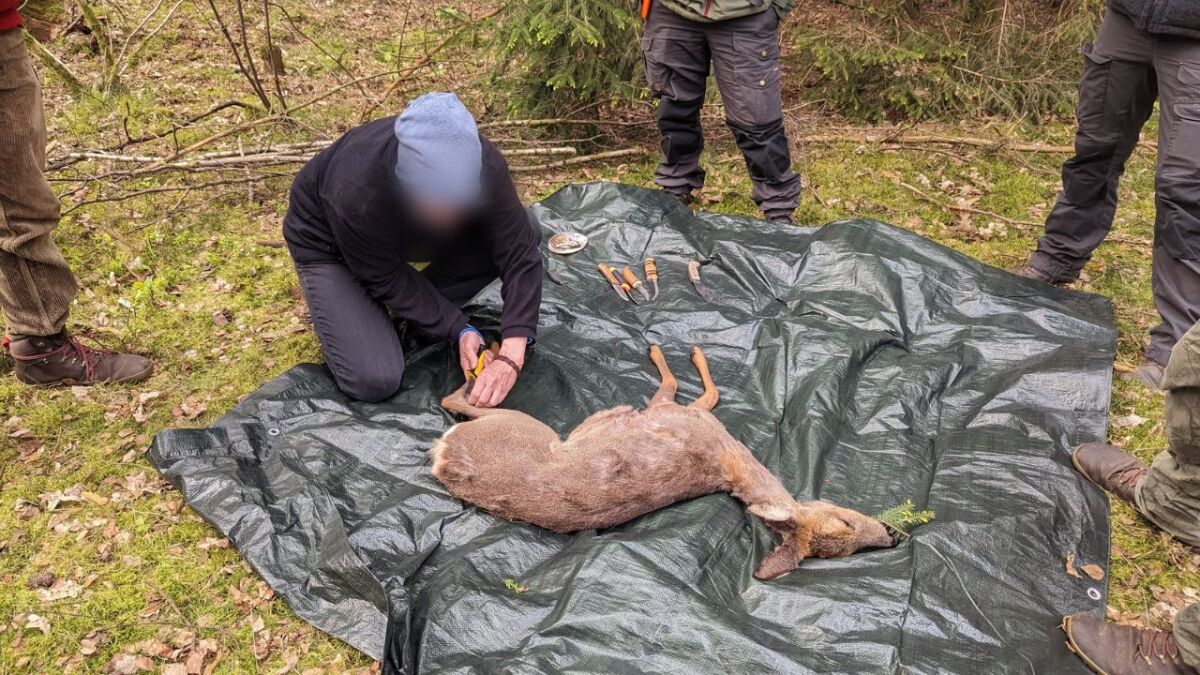
Cooking - Cutting Vegetables and Meat
But Yakut knives also perform well in the kitchen. Their sharp, slightly curved blades are perfect for food preparation.
Whether vegetables, meat, or fish - with a Yakut knife, the work is easy. The ergonomic shape of the handle allows for fatigue-free work even with larger quantities.
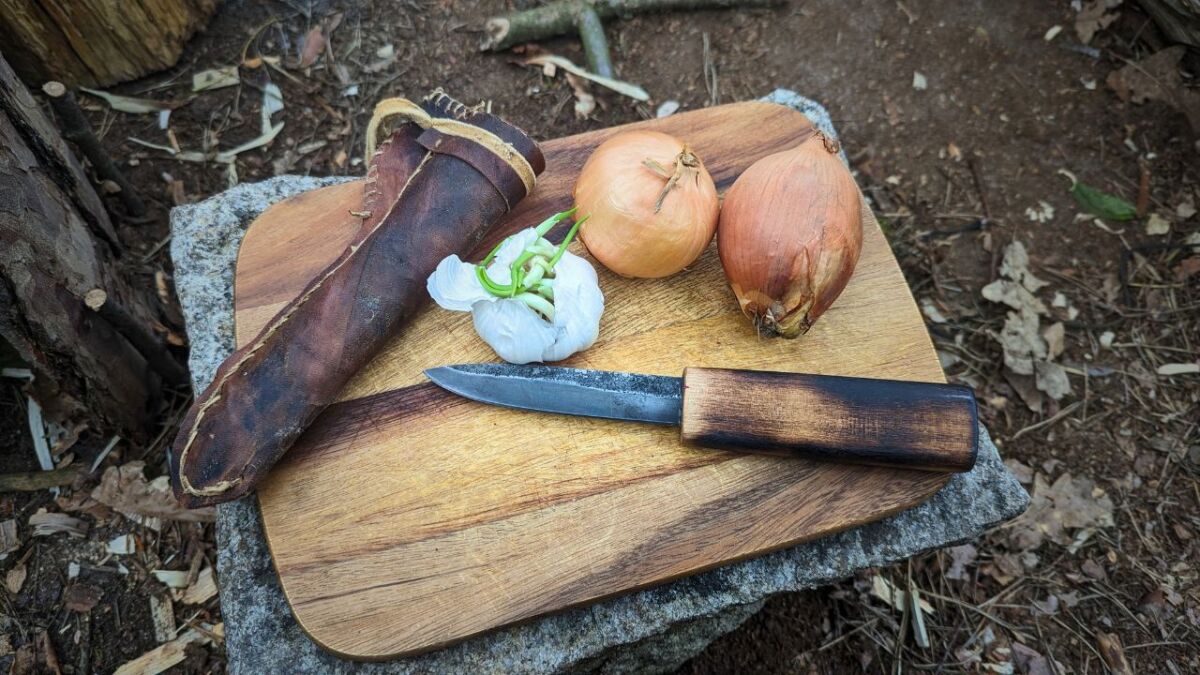
Woodworking - Carving Knives
Finally, Yakut knives are also popular among woodcarvers and Bushcrafters. The characteristic chisel grind is well-suited for wood processing.
With a Yakut knife, branches can be pruned, tips sharpened, and intricate carvings made.
The compact design and robust construction make it a reliable companion for all kinds of outdoor activities.
The versatility is what sets Yakut knives apart. They are not limited to a specific task, but excel in a wide range of challenges.
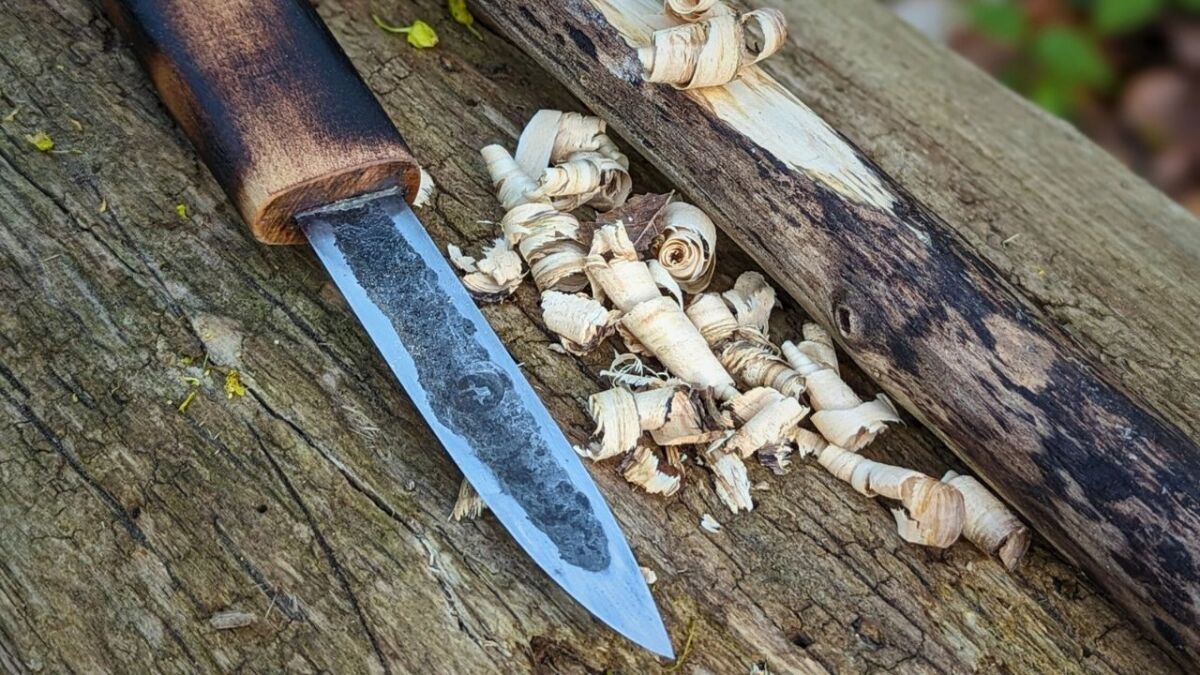
Care and Maintenance of Yakut Knives
As an experienced wilderness mentor and Bushcrafter, I know how important the proper care and storage of Yakut knives is. Here are my tips for you:
Cleaning and Storage
-
Clean your Yakut thoroughly after each use with a soft cloth and mild detergent to prevent corrosion and wear.
-
Store your knife in a dry place to keep moisture away. It is the biggest enemy of your Yakut.
Sharpening
-
To sharpen, you will need a special chisel grind due to the one-sided hollow grind. Practice the angle on a simple sharpening stone or sharpening system. Over time, you will develop a feel for it.
-
Regular sharpening is essential to maintain the cutting performance of your knife.
Care Products
-
Maintain the wooden handle with high-quality oil such as linseed oil to protect it from drying out.
-
For the blade, special knife care oils or waxes against corrosion are suitable.
With these care tips, your Yakut knife will accompany you for a lifetime - whether you're Bushcrafting, survival training, or on your adventures through the wilderness.
Regular care turns your Yakut into a loyal companion on all your adventures.
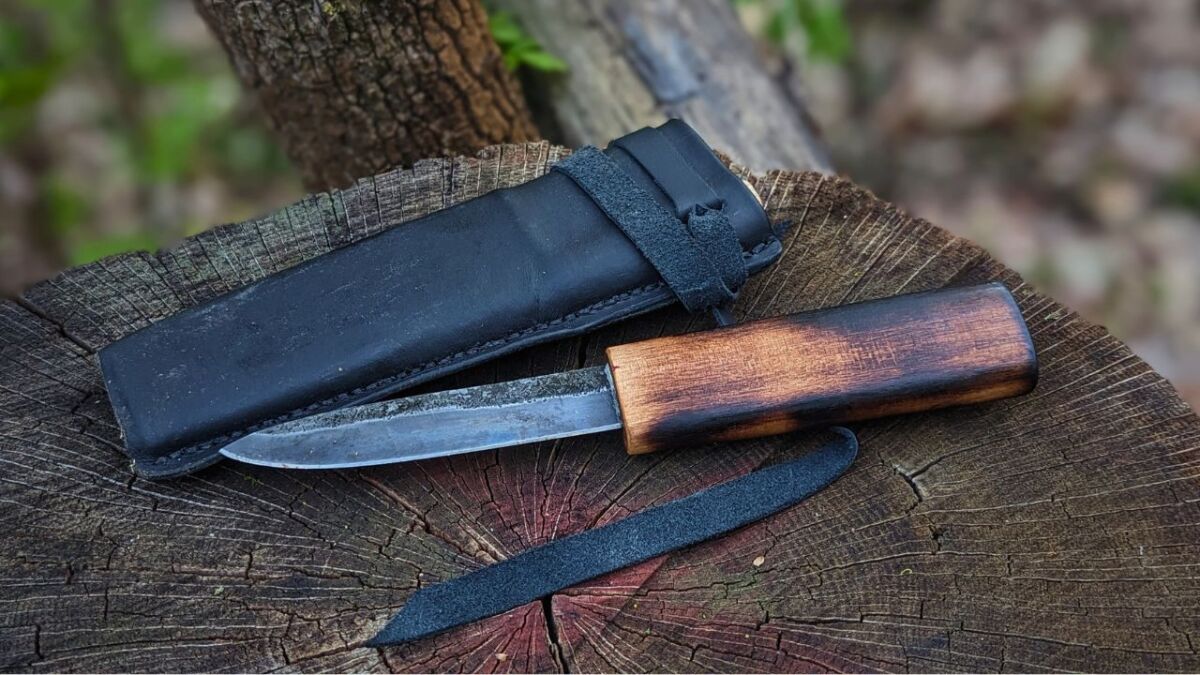
Purchase Recommendations and Sources
I either buy my knives from a friend who is a blacksmith or look around on Etsy.
Prices and quality differences among different manufacturers
The fact is: The prices for Yakut knives vary depending on the manufacturer and quality.
Traditional Yakut knives, made by specialized knife makers, are often pricier than mass-produced ones, as they are handcrafted and made from high-quality materials such as carbon steel.
Sometimes you can find Yakut knives for €60, while others cost €300.
Pay attention to the following things when buying Yakut knives:
- Blade Material: Yakut knives are traditionally made of carbon steel, which is suitable due to its hardness and strength. It is important to ensure that the knife is made of high-quality material to ensure long life and good cutting ability.
- Blade Shape: The single-sided hollow grind is a characteristic feature of Yakut knives, providing an optimal balance between strength and lightness. It should be well executed to ensure the functionality of the knife.
- Handle: Yakut knives often have a characteristic oval full handle, which provides a secure and comfortable grip. It is significant that the handle is well-balanced and easy to hold the blade.
- Manufacturer: It is advisable to choose a manufacturer who uses traditional methods and materials and ensures the quality of the knives. It is also important that the knives are made from local materials and by local craftsmen to support the local economy and environment.
Conclusion: Let's Ask a Bladesmith
Yakut knives show how tradition and everyday life come together.
I talked to Alexej, a small knife maker with a special focus on traditional Siberian knives.
Alexey studied engineering and has been spending many years making knives. He is very knowledgeable about Yakut knives.
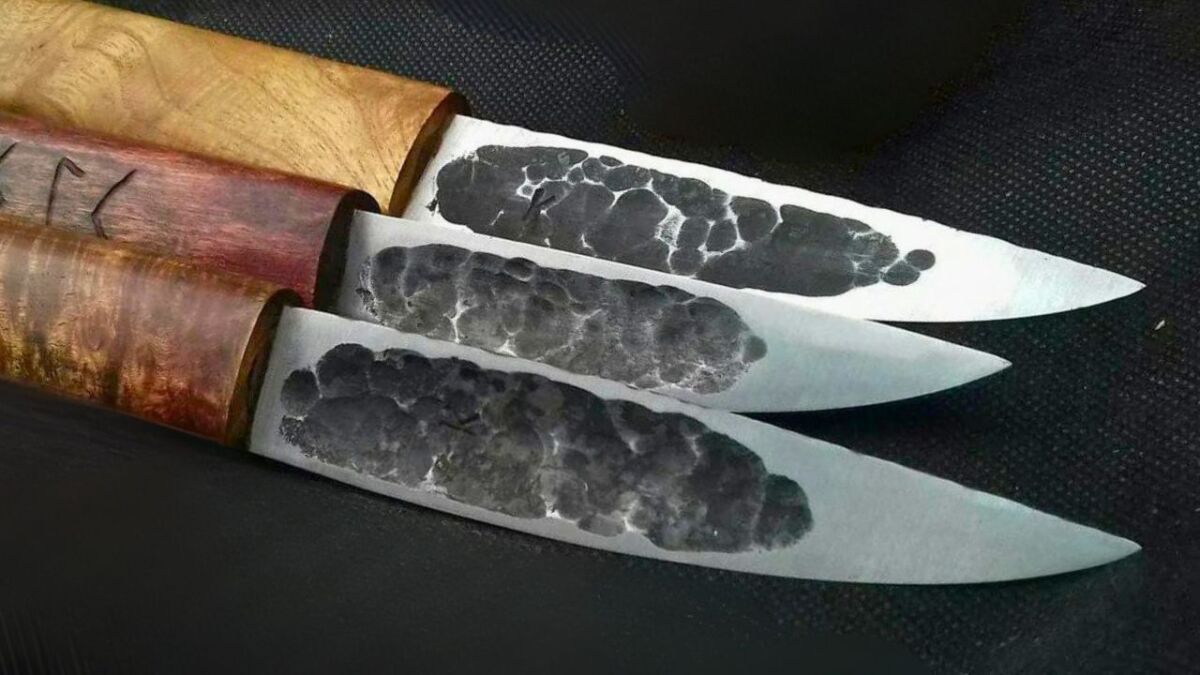
Here are the key points from the conversation:
- Alexej emphasizes the importance of hand-forged blades. These make the knives so special. Their unique shape provides strength and balance, ideal for everyday use.
- According to Alexej, the fuller along the back is the secret to their effectiveness.
- He also discusses safety and ethics. The production of Yakut knives should follow ancient traditions. It respects the environment. Alexej stresses that buyers should look for genuine craftsmanship. In doing so, they not only support the craft but also the environment.
- Alexej recommends using Yakut knives in everyday situations. Whether camping or in the kitchen, they are versatile.
- He advises caution in caring for the knife, as the carbon steel requires special attention.
- Yakut knives have their advantages, such as durability and sharpness. However, there are also disadvantages, such as maintenance and price. Compared to other knives, buyers should carefully consider their decision.
Alexej's conclusion is clear. Yakut knives offer great value for outdoor enthusiasts and traditional craftsmanship lovers. Their uniqueness and functionality set them apart from other knives.
For the right user, they are an enrichment in everyday life and adventures in nature.

Sources for the guide
https://www.richtiges-werkzeug.com/ratgeber/warm-oder-kaltgeschmiedet

Author of the guide
Martin Gebhardt
Hey, I'm Martin. On my blog, you will learn the basics and numerous details about living in the wild. I think survival, bushcraft and the good life in nature are the keys to happiness. Find me here on Instagram or on YouTube. You can find more about my mission on the About Me page.
Was this guide helpful?
19 people found this guide helpful.
5.00 out of 5 points (19 Ratings)
Comments (0)
This post may contain affiliate links. So if you click on the links and make a purchase, I will receive a small commission at no additional cost to you. Click here, to learn more about it.




